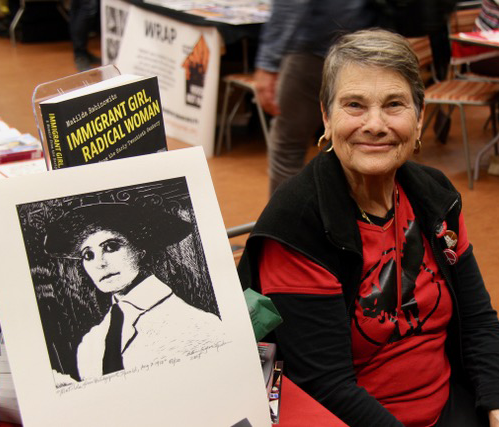I am entering the beginning of the end of my life on our fragile, endangered blue dot— a place of immense beauty and joy, but for far too many a scene of terror and sorrow. For me this is a time of memory and reflection. Still seeking, not answers, but fuller understanding of my roots and my relationship to my place, our time and our shared humanity—to share stories that inspire and shape my practice. Much of my past work was a kind of visual elegy on what we are losing, lyrical oil paintings reveling in the beauty of nature with subtle images of human intervention — some barbed wire, telephone poles, a fence.
In this perilous moment we face a war on culture, education and science waged by elected representatives, threatening values I once assumed we shared. Today, ordinary people see a return to coercive and punitive strategies current during the McCarthy era of the 1950s, successful efforts to ban, condemn, punish and censor ideas or images that do not conform to totalitarian, corporate, military, Christian narratives; we face dark times. Resource extraction, exploitation of labor, and xenophobia are terrifying existential threats to the life of our planet, to people and to our vibrant cultural production. I respond in old age with new work, new style, new format.
My work was always figurative though in art school influenced by 60s formalism I enjoyed working more or less non-objectively. Eventually my love of nature moved me toward painting—landscape, still life and birds in oil and watercolor. In returning to drawing, I found scratchboard an unceasingly engrossing medium. With a degree in English literature, then art school, and years of writing as director and curator for community and artist-run galleries, almost a decade ago I began an exploration of graphic narrative to meld both skills. This led to illustrating the 2017 publication, Immigrant Girl, Radical Woman, a graphic narrative by my grandmother, an organizer for the Industrial Workers of the World. Palestine: A Sketchbook, 1997 is the most recent publication that finds the expression of an urgent message in my old love of painting and landscape. A slim book about my trip to the region nearly three decades ago as a firsthand witness to the difficult lives and the beautiful land of people under occupation, it describes impressions of the prelude to October 7, 2023.
A couple of years ago my brother, Dal also an artist, rediscovered the tape of a conversation he had recorded with our father in the mid 1970s. I had been working on images inspired by reading my father’s FBI file. The transcription of this found narrative provides much of the text for the new work, with excerpts from the file that was requested in the 1960s and finally obtained decades after his death. With these two documents I began working in earnest to complete a graphic narrative: My Father’s Shadows: The FBI, God and the Depression.
The discovery of previously unknown family histories, my grandmother’s typed memoir and my father’s audiotape, has inspired me to write and draw graphic narratives centered in legacies of resistance. Finding pencil and scratchboard marking endlessly absorbing, the graphic narrative form merges my experience as a writer and my devotion to visual art. This medium feels apt for the stories I want to tell and those I want to hear and see.

- Location: Berkeley, CA
- Email: robbin@robbinhenderson.com
- Résumé: resume.pdf